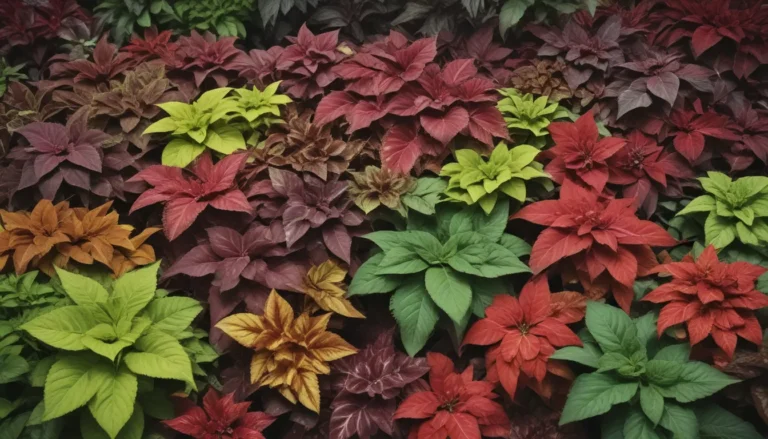The Complete Guide to Growing and Caring for Forest Lilies

Veltheimia bracteata: The Cape Lily
If you’re a fan of ornamental bulb flowers, then the forest lily, also known as Veltheimia bracteata or Cape lily, might just be the perfect addition to your garden. This striking plant hails from South Africa’s Eastern Cape province, where it can be found in scrubby areas along wooded shorelines. Specifically suited to garden cultivation in USDA Hardiness Zones 9 to 11, the forest lily prefers light shade and boasts beautiful clusters of tubular pink blossoms that appear on bare stems from late winter to spring.
In this comprehensive guide, we will cover everything you need to know to successfully grow and care for forest lilies in your outdoor living space. From cultivation tips to pest management and best practices, we’ve got you covered.
What You’ll Learn
- Cultivation and History
- Propagation
- How to Grow
- Growing Tips
- Maintenance
- Cultivars to Select
- Managing Pests and Disease
- Best Uses
- Quick Reference Growing Guide
Let’s start by delving into the background and historical context of forest lilies.
Cultivation and History
Veltheimia bracteata grows from a bulb enclosed in a papery tunic and sports attractive strap-like, ruffled, glossy leaves in shades of pale to dark green. The plant has a clumping growth habit and produces fleshy, bare, green or purple flower stems that bear striking terminal clusters of pink blossoms. These blooms open from bottom to top and last around four weeks, adding a delightful touch to any garden.
Interestingly, the Veltheimia genus is now narrowed down to just two species: V. bracteata and V. capensis, with the latter known as the sand lily. The arrival of these species in Europe dates back to the late 18th century when plant hunters introduced them to various horticultural institutions, including Britain’s Royal Botanic Gardens at Kew.
Forest Lily Propagation
If you’re keen on growing your own forest lilies, there are several propagation methods you can try:
- From Bulbs: Plant firm, dry bulbs in early fall in moistened sandy loam. Water regularly and fertilize every two weeks.
- From Seeds: Harvest seeds from dry capsules in midsummer and sow them in sandy loam in the fall. Ensure proper temperature for germination and transplant to the garden after three to four years.
- From Leaf Cuttings: Utilize mature leaf cuttings dipped in rooting hormone powder.
- By Offset Division: Divide offsets in late summer and replant immediately.
- From Seedlings/Transplanting: Plant ready seedlings or nursery specimens in the garden.
How to Grow Forest Lilies
Forest lilies thrive in light shade with sandy loam soil and a slightly acidic to neutral pH. Adequate drainage is crucial to avoid rotting, and they require moderate watering during the growing season. Fertilize regularly and deadhead spent flower stalks for optimal growth.
Growing Tips:
– Grow in Zones 9 to 11 or indoors in other regions.
– Provide minimal light and moisture initially.
– Use well-draining sandy loam with a neutral pH.
– Sow in light shade outdoors or bright, indirect sunlight indoors.
– Avoid overwatering to prevent rotting.
– Fertilize twice a month during the growing season.
Maintenance
Regular maintenance of forest lilies includes thinning out overcrowded plants, deadheading, and removing dried foliage at the end of the growing season to prevent pests and pathogens. Dividing offsets every three to four years and repotting or transplanting as needed ensures healthy growth.
Forest Lily Cultivars to Select
In addition to the standard species, cultivated varieties of V. bracteata are available, offering a range of colors and hues to choose from. Varieties such as ‘Cream,’ ‘Fuchsia Pink,’ ‘Lemon Flame,’ and the Pastel Series can add diversity to your garden.
Managing Pests and Disease
While forest lilies are generally hardy, they may fall victim to caterpillars, slugs, and snails, especially in damp conditions. Prevent rotting by ensuring proper drainage and avoiding excessive moisture.
Best Uses for Forest Lilies
Forest lilies are versatile plants that can be used in various settings, from containers to mass plantings in shade gardens. Their lush foliage and vibrant blooms make them an excellent choice for adding color and texture to any landscape.
Quick Reference Growing Guide
- Plant Type: Flowering bulb
- Flower/Foliage Color: Shades of pink to greenish-yellow/green
- Native to: Eastern Cape Province, South Africa
- Tolerance: Light frost
- Hardiness (USDA Zone): 9-11
- Maintenance: Moderate
- Bloom Time: Winter to spring
- Soil Type: Sandy loam
- Exposure: Light shade
- Soil pH: 6.0-8.0
- Spacing: 12-18 inches
- Soil Drainage: Well-draining
- Planting Depth: 1/10 inch (seeds); same depth as in original container (bulbs/seedlings)
- Attracts: Hummingbirds
- Height: 18-24 inches
- Companion Planting: Cape primrose, clivia, hellebore, spurflower
- Spread: 12-18 inches
- Uses: Containers, mass planting, naturalized, shade gardens
In conclusion, forest lilies are delightful plants that can thrive under the right conditions. By following the tips and guidelines outlined in this guide, you can successfully grow and care for these beautiful flowers in your own garden. Happy gardening!





